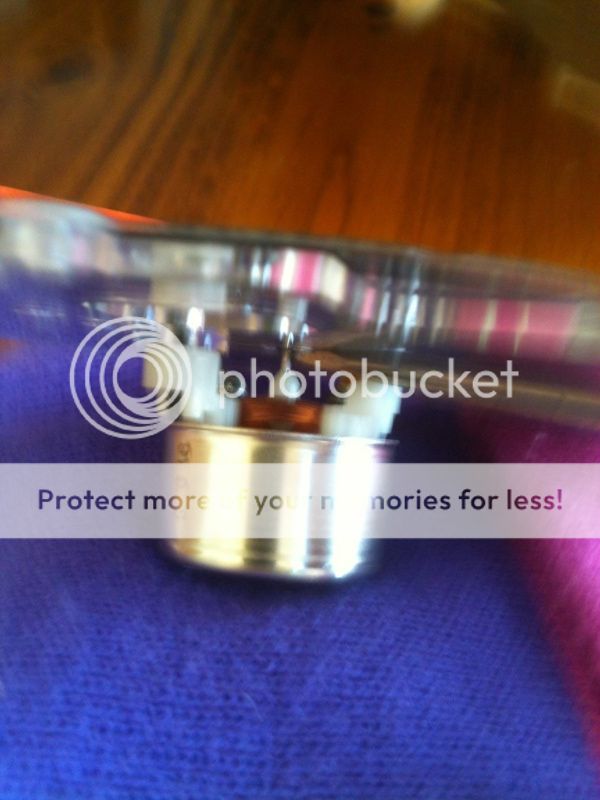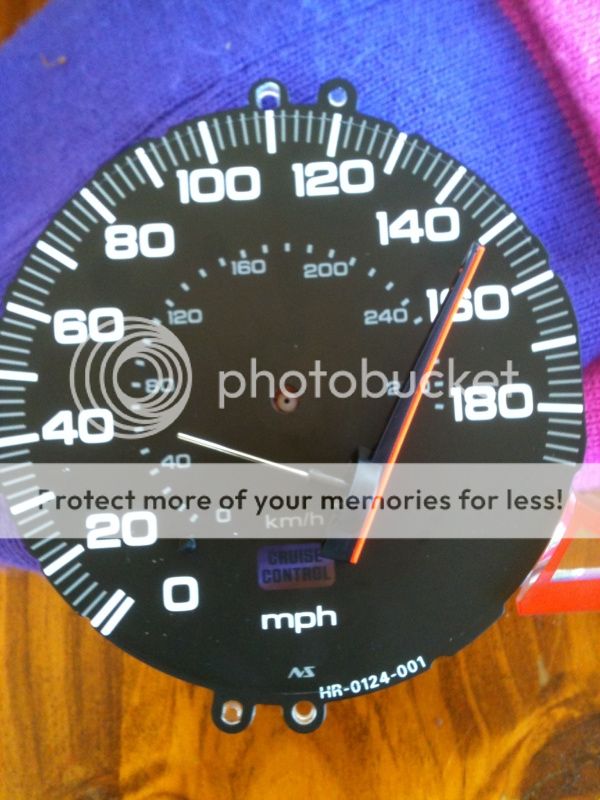Anyone give any advice on removing the Needles on the Gauge's?
Thanks
Thanks
I first place some paper on the gauge dials to protect them, and pull the needle using 2 forks as levers/leverage placed in a 180o angle to be sure you pull it vertically
Are you going to paint them in yellow?
I'm dismantling the MPH cluster this weekend , You want me to test this theory ? Looks like they are just pressed on .
I'll practice on a non working gauge i have here first.


Get back to us after you put the needle back in and see how it works.
You have to have it in the car to get 0 centred again .
Did you do the tachometer too? They are both working fine?
I'm not clear on this. You say you install the gauge and then press the needle/shaft assembly in by hand? If you get it in the ballpark it settles down to zero by itself and when powered up resets itself? Do you power them up then install the needle/shaft?
I have attempted this and have never had a problem getting the needle/shaft out but when I installed them back in the gauges they have never worked correctly. They would move but the information it showed was wrong. I've sent them out to a speedo shop and they never worked correctly either.
You are correct , it will need calibration afterwards, I will get a gps and have someone drive to 60 and set the needle, then fine tune with the pot. i will update you when i get around to doing this. I have only turned the car on and fitted at zero, and it seems to be ballpark, it won't be accuate at all yet though .
Trial and error thing really, I don't think its an exact science.
The key word is calibrate , to read actual mph or manufacture mph,this is what i meant as exact science .I have also done this many times and as long as you calibrate it properly there is no problem.
I have done the needle removal in the past and have been successful, there is a very special way to doing this though and I use a few unique tools for the job;
Hey Joe , here we go again , oil filters ,cappy and peppers wedges LOL. As crazy as this sounds ,I use to advance mileage on cars (dont ask) ,our VSS sensors were magnetic pulse generators (as every other manu. used ) The VSS produce a frequency signal to a speedometer buffeting unit ,it converted the signal for the speedometer . I would use a freq. generator to drive the speedometer(and increase odometer) , what i notice was that with the key off the needle was not always centered at zero , this is on brand new cars . once i set the freq. the speedometers all read the same . I think what their claiming here is their replacing the needle where they think it should be and the adjusting the pot for correction. Just made sweet and hot (red) sausage wedges , hot is much better !!!Please elaborate and share.
this is pretty much what we did, we ran our product on a road dyno (we had 6 dynos) took freq. readings from the VSS sensor at 90 mph .duplicated it thru a freq. generator ,feed it to the speedometer and in a few nights we put 3k miles on the vehicle :wink:I am working on a test bench for this to pulse the cluster with a function generator at the exact frequency for the appropriate speed, thus enabling me to calibrate on the bench and not this "in car" muck around.
I will be extracting the group of frequencies from a stock car, on a dyno with stock tyres ie factory tyres that I have. I will update in a few weeks, bit busy at the moment for this.
If anyone wants a calibrator, I'm working on it for the community :wink:
this is pretty much what we did, we ran our product on a road dyno (we had 6 dynos) took freq. readings from the VSS sensor at 90 mph .duplicated it thru a freq. generator ,feed it to the speedometer and in a few nights we put 3k miles on the vehicle :wink:
